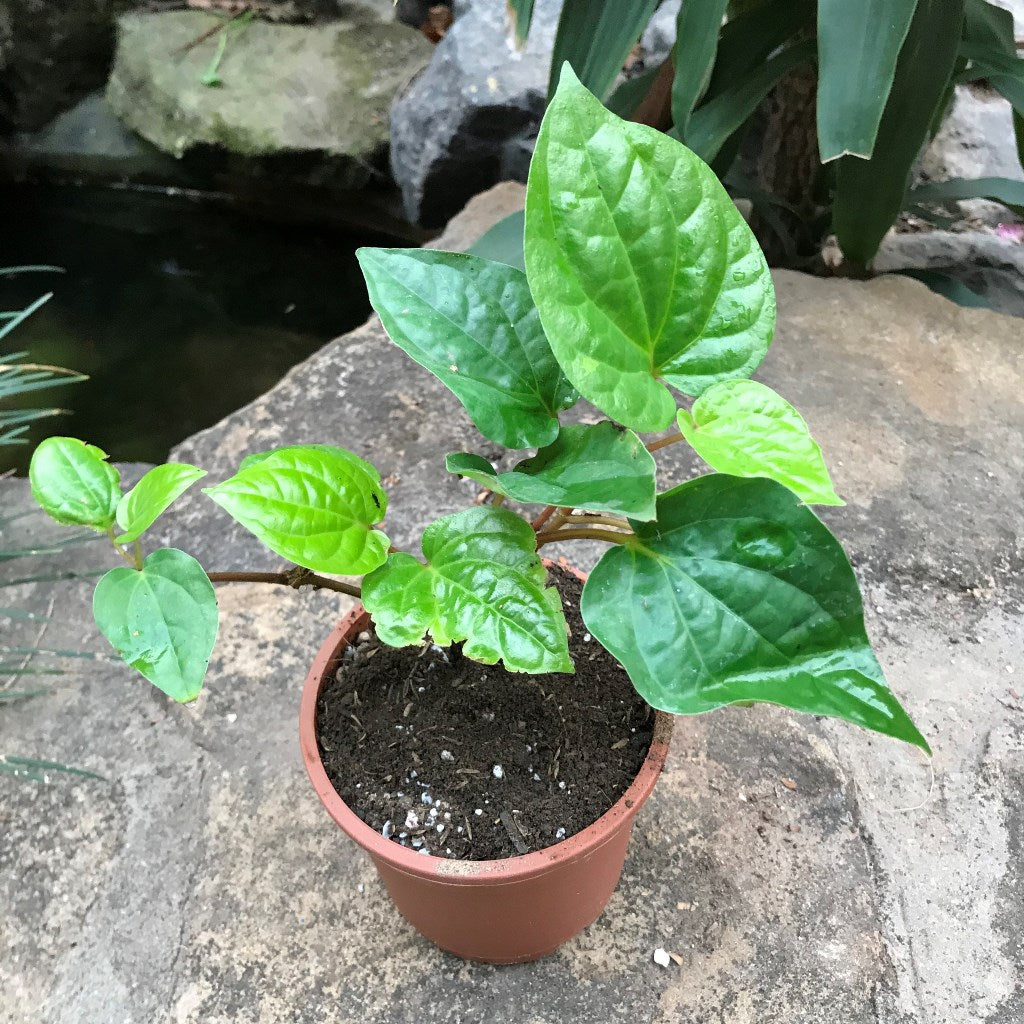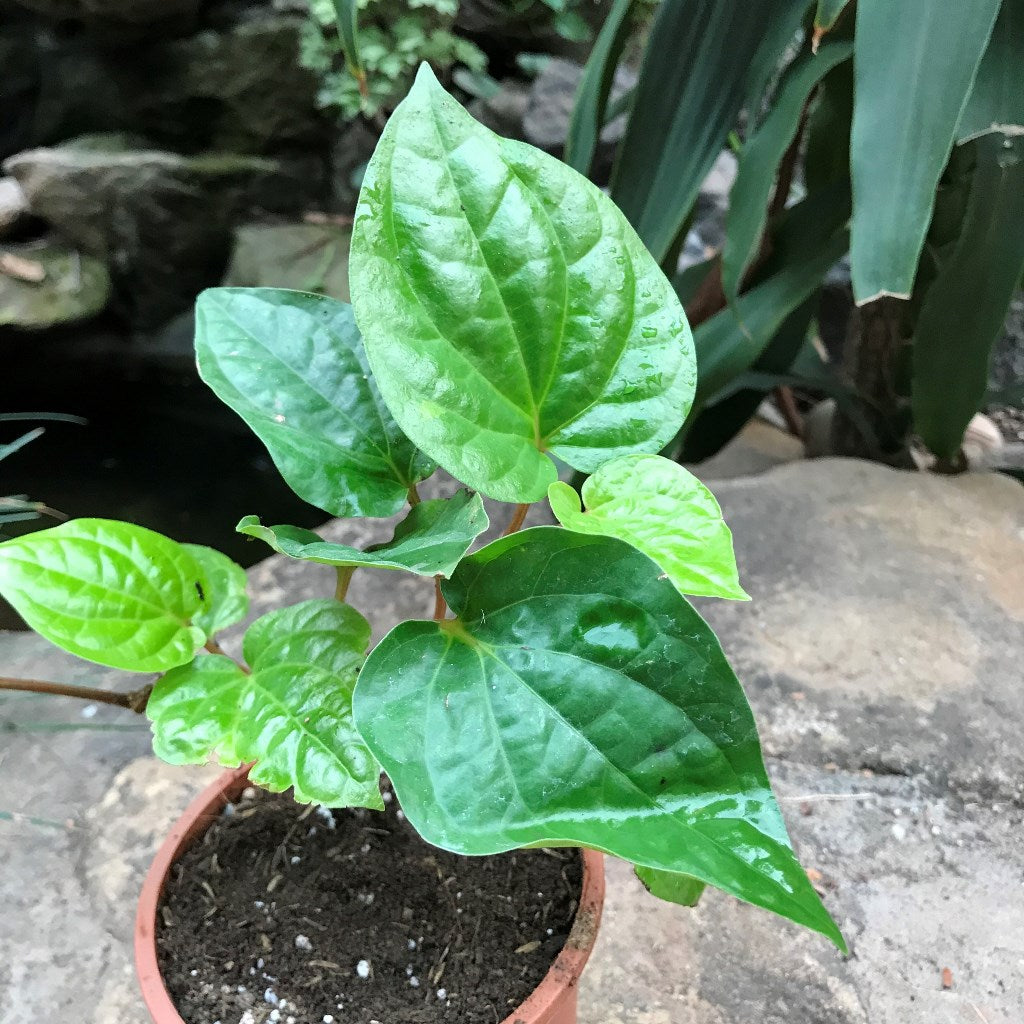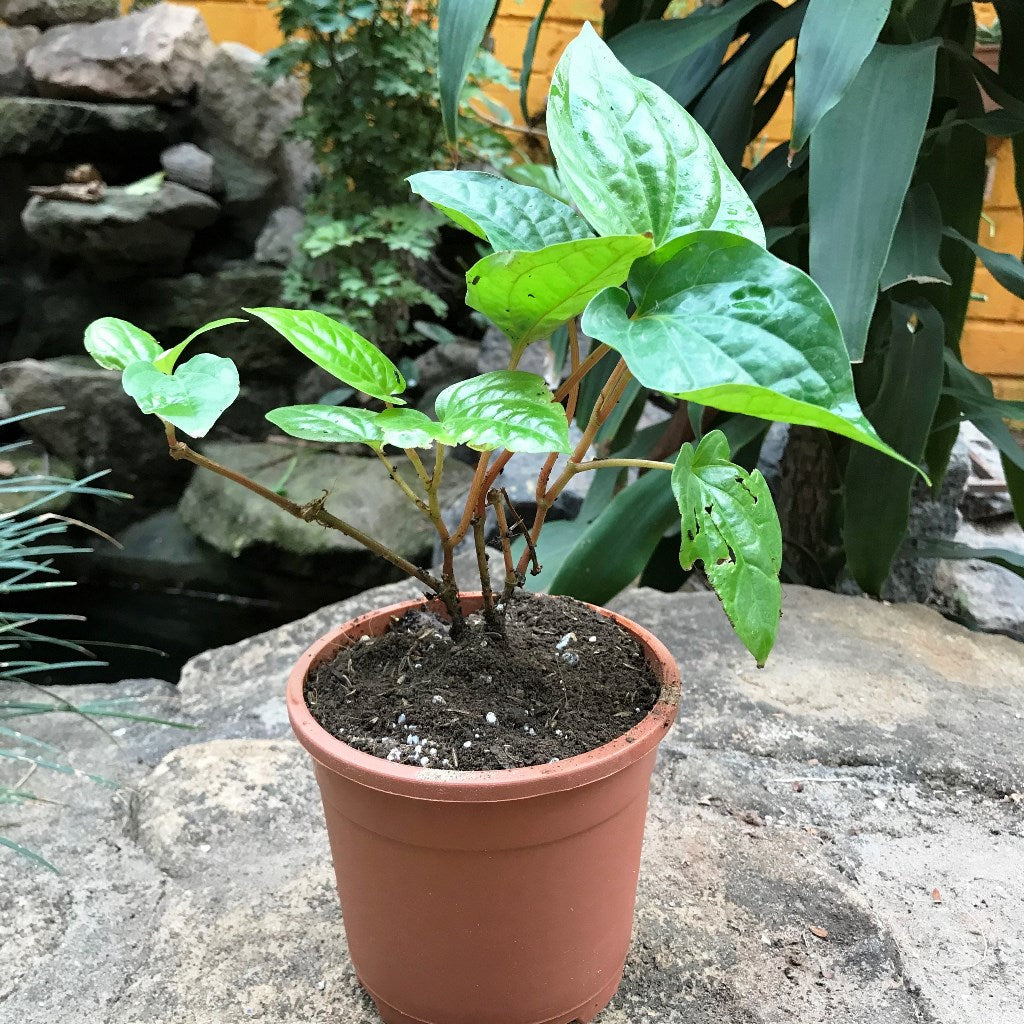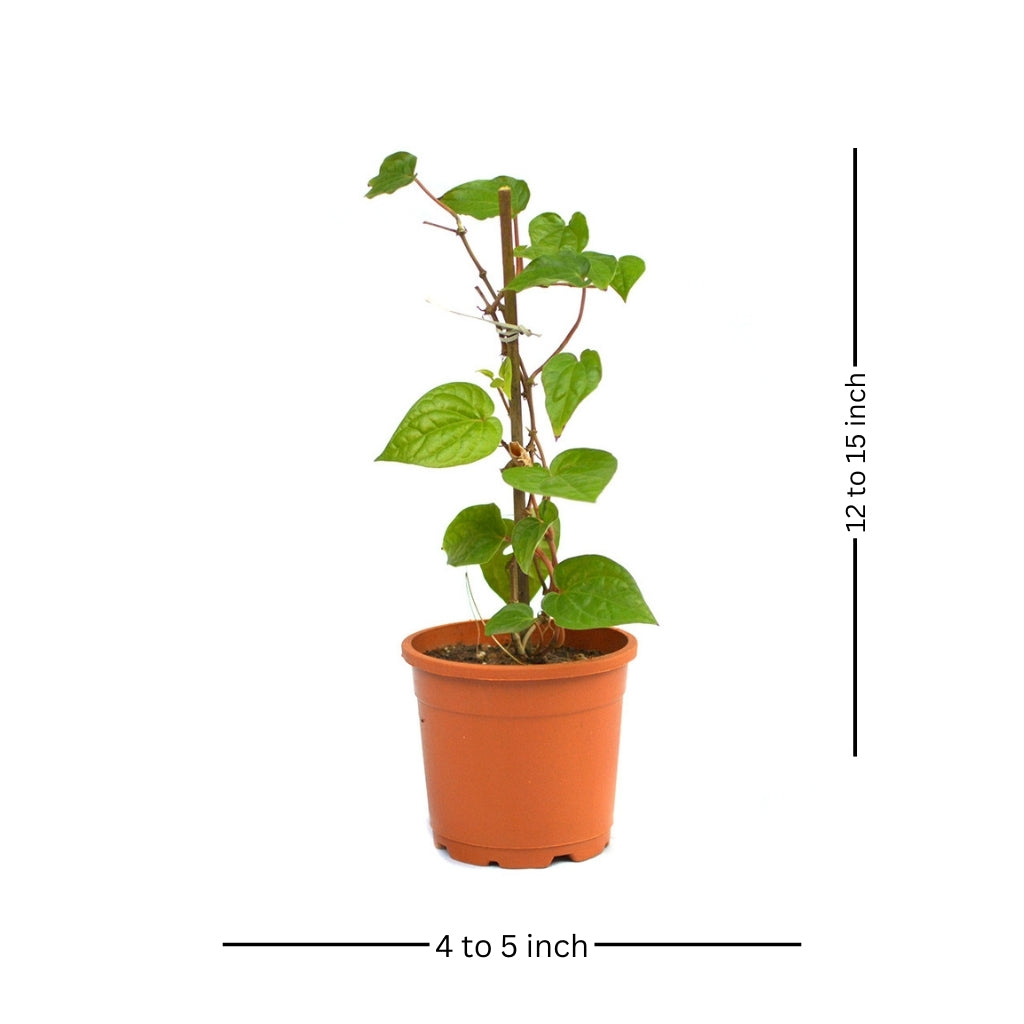Naagarvel
Family
Piperaceae
Origin
India & Indonesia
Description
Betel leaf popularly known as “Paan” is a perennial herb vine with deep green & heart shaped leaves. It can climb as high as 10-15ft. The heart-shaped leaves are marvelously pungent and spicy. Its waxy green, heart-shaped plant leaves are used for medicinal and culinary purposes.
It is grown to climb up a tree or fence during the summer or trained to spill over the edge of a pot in a hanging basket. It proliferates but appears to grow most quickly within the warm temperatures and long days of summer.
Environment
Betel leaf prefers a semi-shade position. It makes a good under storey plant. It can be grown in a wide range of soils such as sandy loam, heavy clayey loam. Light medium sandy loam soil rich in organic matter, and with adequate drainage, is suitable for its cultivation.
Betel needs constantly moist soil, but there should not be excessive moisture. Irrigation is frequent and light, and standing water should not remain for more than half an hour. It does not tolerate high rainfall or waterlogged conditions. Land should be raised by 5 to 10 cm from the adjacent areas and soil should be prepared by 4 to 5 ploughings, providing proper drainage.
Regular feeding and watering will keep it growing very lush. Although betel leaf is considered a tropical to subtropical plant, it will adapt to cold conditions if given a warm spot in winter, and could be grown in a large pot, and shifted to a cosy position in the cold months of the year.
The plant requires support to grow, which can be provided by raising wooden stakes or trellis . Being a large twiner, it needs a host to twine and covers the host in a very short period. If the stem cuttings with aerial roots are thrown over trees, they start growing and strike roots in the ground.
Landscape Uses
Ideal & a very useful herb to be grown in the garden.
























